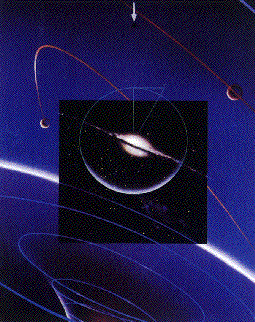


available online at
http://www.learner.org/resources/series42.html
Use the [Back] button on the browser to go back to the page you were on.
A visually splendid introductory Physics coure, The Mechanical Universe . . . and Beyond combines state-of-the-art computer graphics by NASA's celebrated Jim Blinn and dramatic reenactments of great moments in the history of Science with introductory lectures by CalTech professor David L Goodstein. "An extraordinary piece of educational television," said the Los Angeles Times of this in-depth adventure of the mind that traces the interaction of ideas from Aristotle to Einstein to explain the theories of such intellectual giants as Copernicus, Kepler, and Newton. The programs clearly explain and illustrate classical mechanics, electricity and magnetism, relativity, waves and optics, heat and thermodynamics, and modern physics. Produced by the California Institute of Technilogy and the Southern California Consortium and the Annenburg--CPB Project.

available online at
http://www.learner.org/resources/series42.html
Use the [Back] button on the browser
to go back to the page you were on.
Part I
1: Introduction to The Mechanical Universe
Introductory preview introduces revolutionary ideas and heroes from Copernicus to Newton and links the Physics of the heavens and the earth.
Galileo's imaginative experiments proved that all bodies fall with the same constant acceleration.
The function of mathematics in physical science and the derivative as a practical tool.
Galileo risks his favored status to answer the questions of the Universe with his law of inertia.
Physics must explain not only why and how much, but also where and which way.
Newton lays down the laws of force, mass, and acceleration.
Newton and Leibniz arrive at the conclusion that differentiation and integration are inverse processes.
The first authentic steps toward outer space travel as Newton discovers that gravity describes the force between any two particles in the Universe.
A look at the Platonic theory of uniform circular motion.
All physical phenomena of nature are explained by four forces: two nuclear forces, gravity, and electricity.
11: Gravity, Electricity, Magnetism
Shedding light on the mathematical form of the gravitational, electric, and magnetic forces.
A dramatic recreation of Robert Milikan's classic oil-drop experiment to determine the charge of a single electron.
According to one of the major laws of Physics, energy is neither created nor destroyed.
Potential energy provides a powerful model for understanding why the world has worked the same way since the beginning of time.
What keeps the Universe ticking away until the end of time?
The music and mathematics of periodic motion.
Why a swaying bridge collapses with a high wind and why a wine glass shatters at a certain sound.
With an analysis of simple harmonic motion and a "fudge factor", Newton extended mechanics to the propagation of sound.
An old momentum with a new twist.
From spinning tops to the precession of the equinoxes.
The discovery of elliptical orbits helps describe the motion of heavenly bodies with unprecedented accuracy.
The deduction of Kepler's laws from Newton's universal law of gravitation is one of the crowinging achievements of Western thought.
The precise orbit of a hevenly body -- a planet, asteroid, or comet -- is fixed by the laws of conservation of energy and angular momentum.
Voyages to other planets use the same laws that guide planets around the solar system.
From Kepler's laws and the theory of tides to Einstein's general theory of relativity, into black holes, and beyond.
A last lingering look back at mechanics to see new connections between old discoveries.
Part II
27: Beyond the Mechanical Universe
The world of electricity and magnetism and 20th-century discoveries of relativity and quantum mechanics.
31: Voltage, Energy, and Force
36: Vector Fields and Hydrodynamics
37: Electromagnetic Induction
Many properties of light are properties of waves, including reflection, refraction, and diffraction.
41: The Michelson-Morley Experiment
42: The Lorentz Transformation
If the speed of light is to be the same for all observers, then the length of a meter stick, or the rate of a ticking clock, depends on who measures it.
Einstein is motivated to perfect the central ideas of physics, resulting in a new understanding of the meaning of space and time.
44: Mass, Momentum, Energy
45: Temperature and Gas Laws
46: The Engine of Nature
47: Entropy
48: Low Temperatures
52: The Quantum Mechanical Universe
A last look at where we've been and a peek into the future.
to go back to the page you were on.
(C) 1998, Doug Davis; all rights reserved